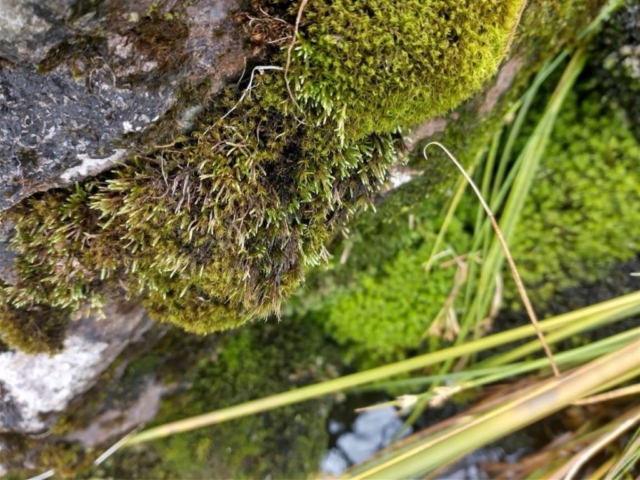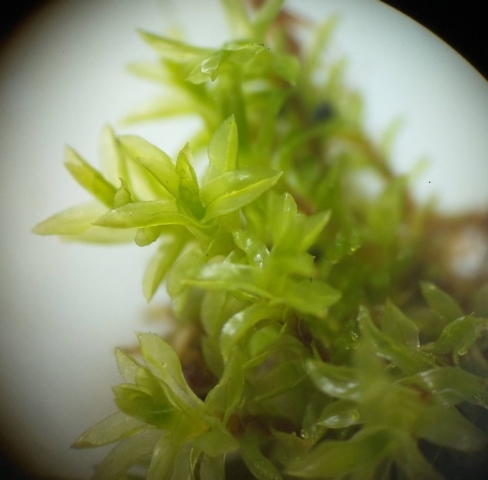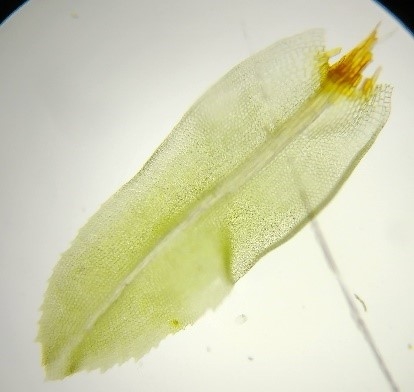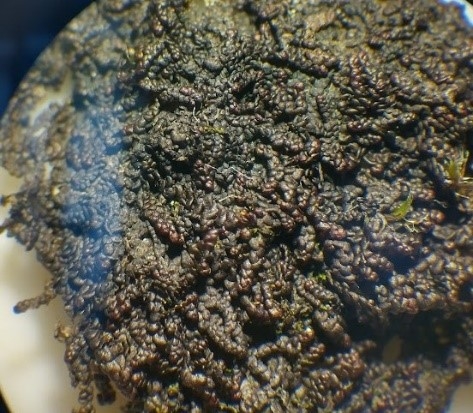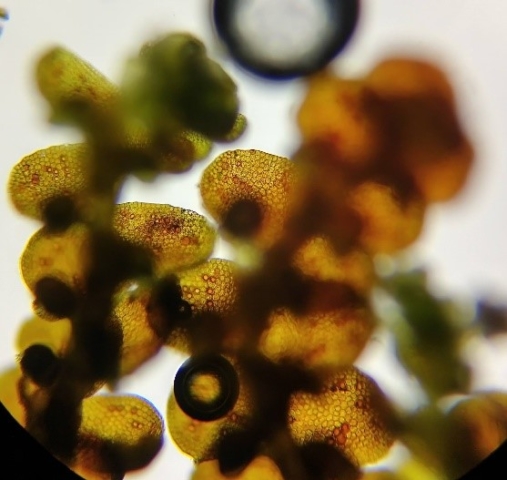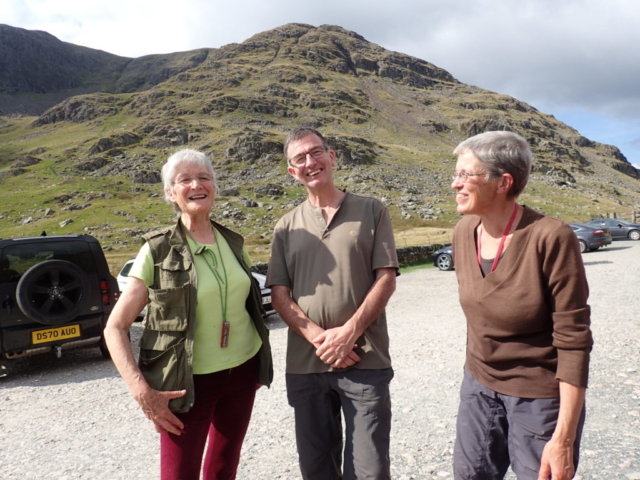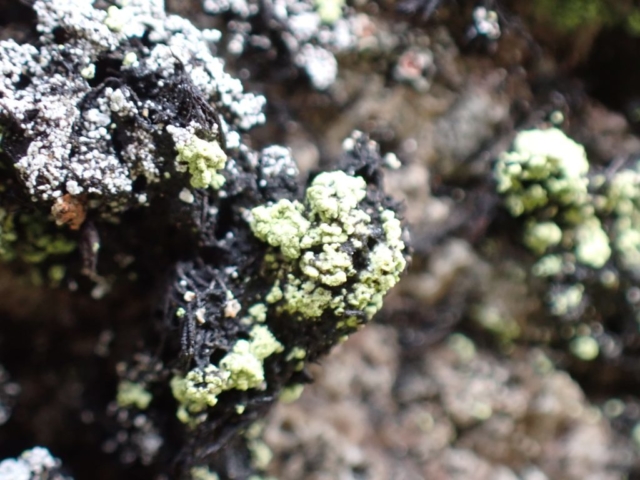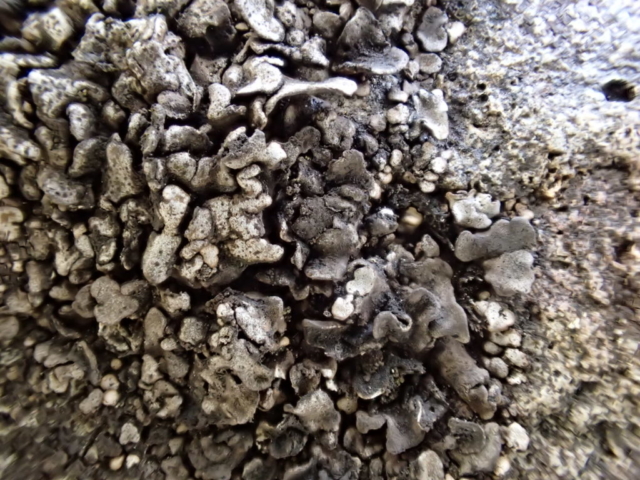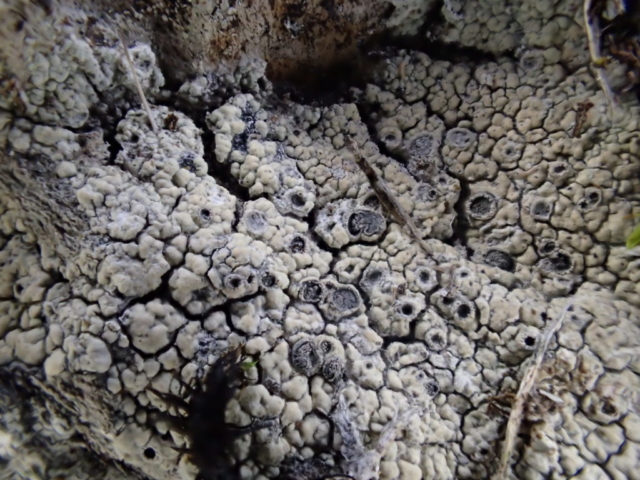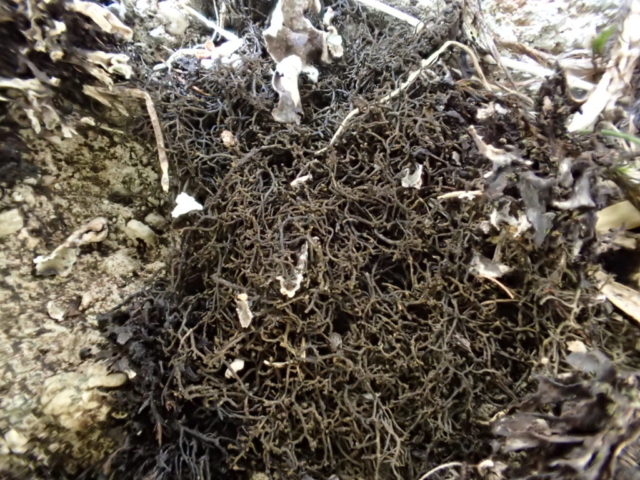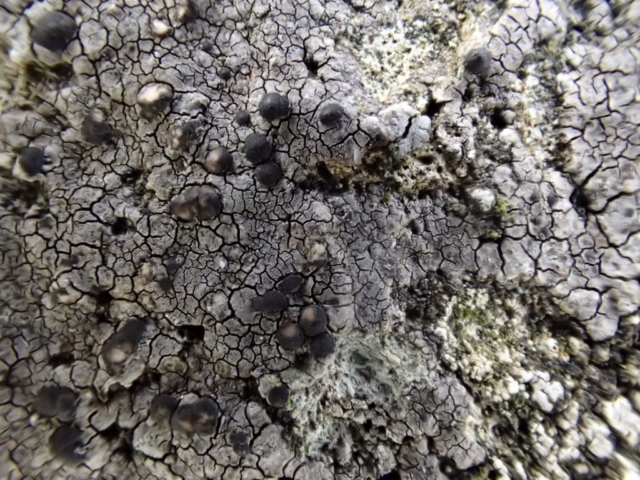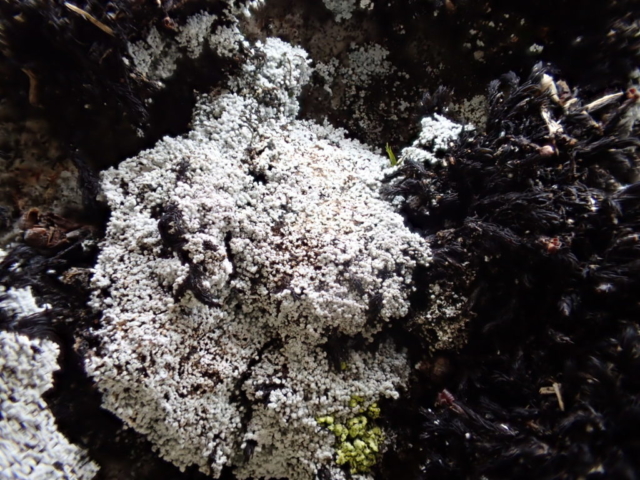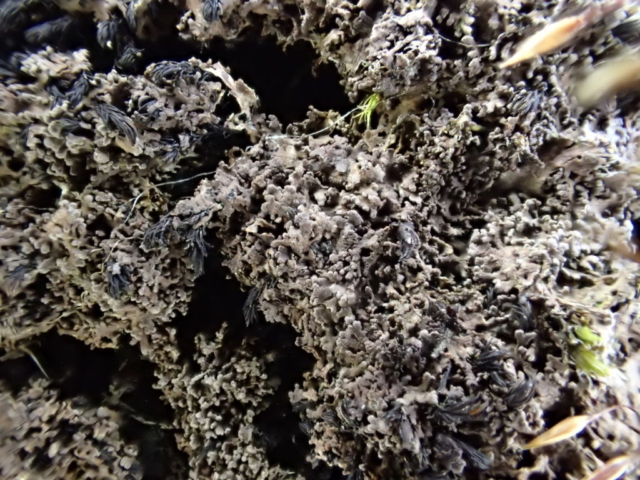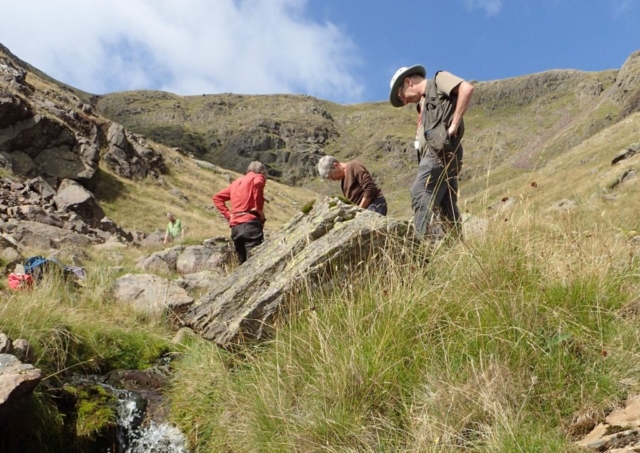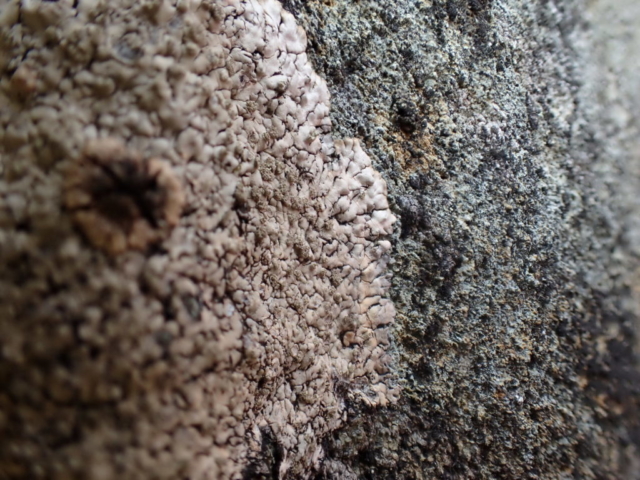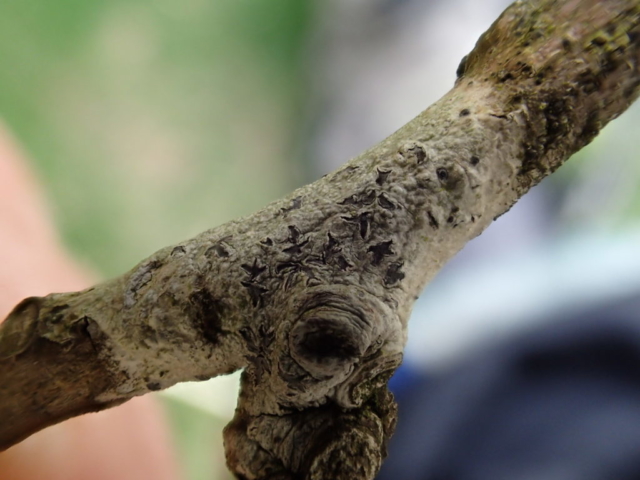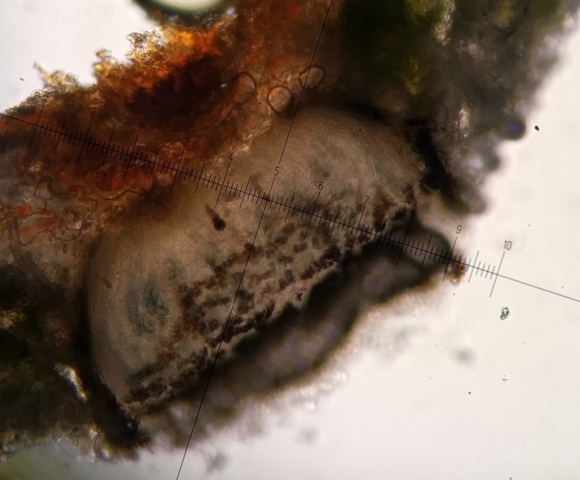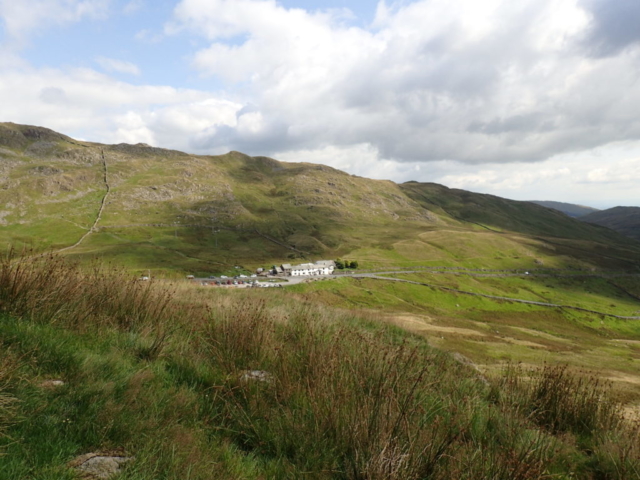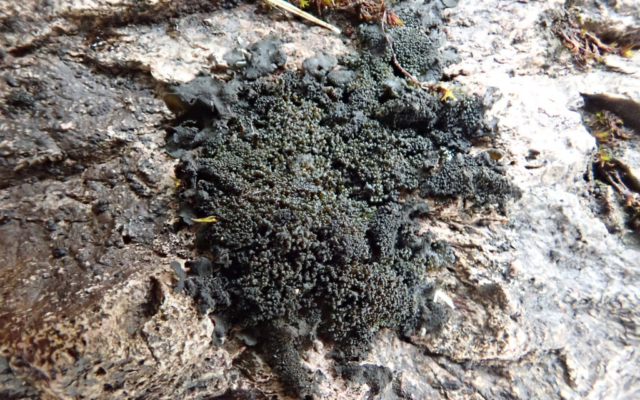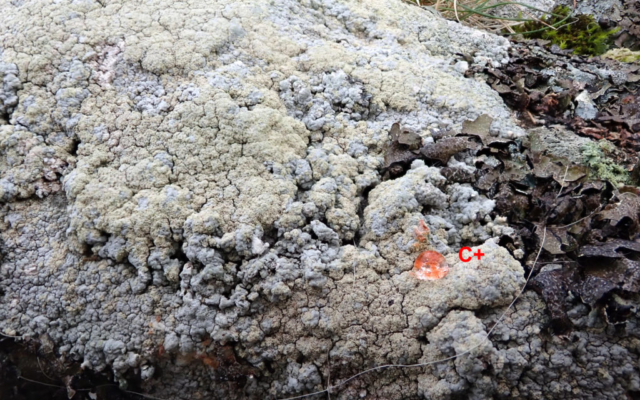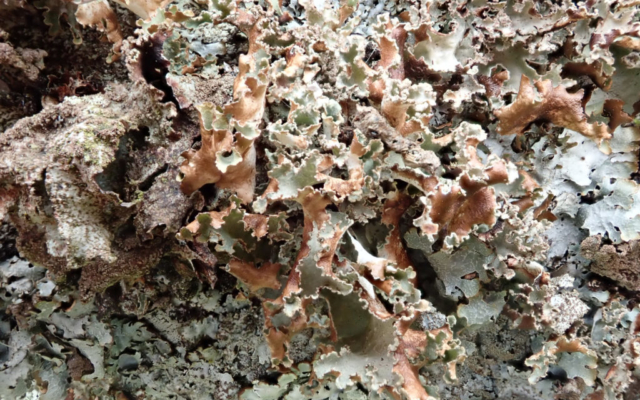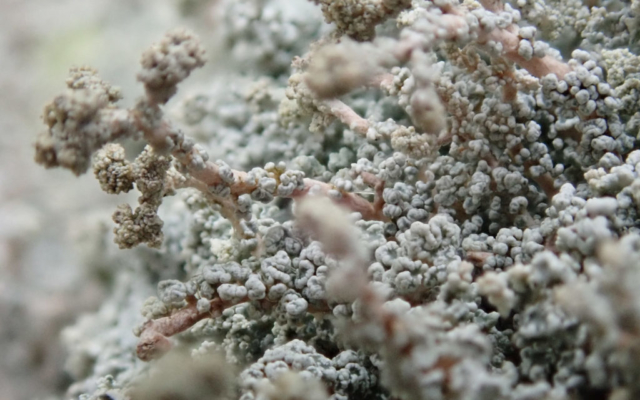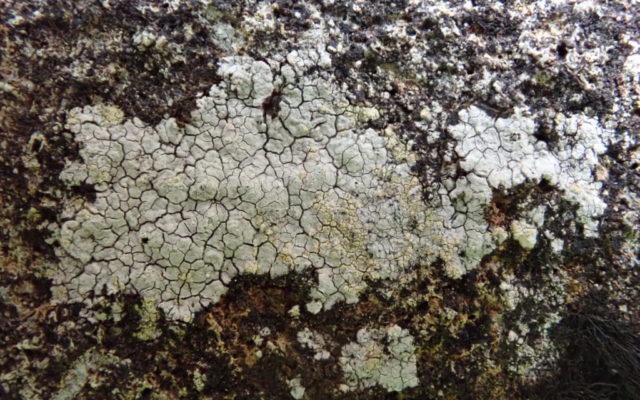Bryophytes
Kirkstone pass car park seemed busy when we arrived, with people unloading bikes and setting out on walks. It was a lovely sunny morning, but with some lingering mist above the pass. We were a small group, mainly lichen fans, so it seemed I’d be the only one looking at bryophytes. As we set off west from the car park the lichen group clustered around boulders, while I went to explore some small flushes and boggy areas. I was sure I’d seen Warnstorfia fluitans around here on a previous visit, but it didn’t want to show itself today. There was, however, a nice golden patch of Ptilidium ciliare, such an attractive liverwort that I attempted to distract the lichenologists from their boulders; they were moderately impressed by the lovely ciliate leaves or just being polite! Higher up the hillside we reached a large rock face, where Judith pointed out extensive sheets of Frullania. The shoots looked very narrow and dark, with the leaves curled under, and I wondered if it might be one of the less common species. Checking later under the microscope, it became clear that it was F. fragilifolia. The leaves were coming off on my hands and on the microscope slide, but there didn’t seem to be any really denuded stems. It was aromatic, but not as strongly as some liverworts. Other features however were much more distinctive: the underleaves were an irregular shape and often wedge shaped rather than round, the ocelli were scattered across the leaves rather than in a straight line, and the first underleaf on each branch was 3-lobed. This last feature was quite difficult to see, as it wasn’t always easy to get a clear view of the underleaf at the junction of stem and branch, but I found a few clear examples.
As we climbed higher into the corrie, the terrain became more interesting. The beck coming down the hillside was full of bryophytes, with thick black mats of Jungermannia exsertifolia, including some fertile shoots. Other species included Philonotis fontana, Dichodontium palustre and D. pellucidum, and a patch of Palustriella commutata. It was nice to see a small cushion of Anomobrym julaceum and a couple of nice bright green patches of Anoectangium aestivum as well as Amphidium mougeotii. We continued across and up to reach a large rock face, where there was more Frullania fragilifolia, and a small patch of Gymnomitrion obtusum (the rounded leaf lobes were clearly diagnostic when checked later under the microscope). Somewhere round here I found a small moss in a crevice in the ground, which had tongue-shaped leaves a bit like an Encalypta. On checking later, it turned out to be Leptodontium flexifolium, which was an exciting new find for me. We had a lunch break here and I left early to check my finds at home. It felt like a productive morning, nice to be out in the fresh air and always good to catch up with people in person.
Clare Shaw
Lichens
The weather is key to the enjoyment of montane lichens. We’d postponed this trip after the original date got itself a yellow weather warning. And then the actual day dawned misty in the valley. But as I reached the top of the Struggle I came out into the sun. Hurrah! The weather gods were being kind, and as we (6 lichen folk and a lone bryologist) gathered in the Kirkstone Pass car park an osprey wheeled above the mist to cheer us on. The crows didn’t like it though…
The great thing about that car park is that you are high up at the start of the day. A less good thing is that it’s a busy place (I counted 7 overnighting motorhomes and a strong toilet smell). It’s also a spot that spoils you for choice: so many rocks and so little time! We went west (towards the quarry and below the corrie) out of the crowds and above the clouds. There were acid rock species for everyone to enjoy. Allan Pentecost was very helpful when it came to identification of more difficult species, as well as confirming the things we’d learnt ourselves during lockdown and pointing out things we’d never thought of! There were plentiful thalli of Ophioparma ventosa (and the lichenicolous fungus Muellerella ventosicola); lots of Pertusaria corallina. We started to get to grips with Lecideas (lactea and confluens) and Porpidias (macrocarpa and soredizodes). Clare impressed us with the moss Ptilidium ciliatum. A damp rock face produced Miriquidica pycnocarpa f. sorediata and the hi-vis Arthrorhaphis citrinella. And just to the side of it, Chris found Cetraria muricata with its many spinules.
We moved a bit further west in search of more basic outcrops. The beck provided isidiate Collema glebulentum; a line of little cliffs had wood sage and roseroot and alpine ladies mantle. There was Ionaspis lacustris; Pertusaria corallina adjacent to P. pseudocorallina for comparison purposes; the slightly jaundiced thallus of Diploschistes scruposus with those lovely hollowed (urceolate) apothecia; and the somewhat scurfy Porpidia rugosa.
After lunch, Allan and Judith descended briefly and explored a gully. Massalongia carnosa and Pertusaria flavicans were the result. The others headed for a little outcrop with a hawthorn (Caz found what may be Phaeographis smithii: we await confirmation), Peltigera membranacea and Agonimia tristicula below. A damp cliff enabled Allan to show us the interesting black crust of Pyrenopsis subareolata. Dermatocarpon intestiniforme again hinted at slightly less acidic conditions. The discarded nappy was less pleasant. Higher up there was Peltigera praetextata and Collema flaccidum on beckside boulders; Allan found Fuscidea kochiana too.
But it was time to head back via an easy amble: despite not going very far we’d managed to find over 80 species. And there’s still so much to explore from that car park. Future trips could go up into the corrie; further round towards the quarry; up on the east side of Red Screes; beyond the Kirk stone itself and maybe then we could think about crossing the road…
Pete Martin
Allan Pentecost added, “For interest, the stream which we were looking at, which seems to be unnamed, had a pH of 7.4, a calcium content of 8 ppm and a specific conductivity of 113 uS/cm.”
Thanks to Judith, Pete and Chris for the photos:

